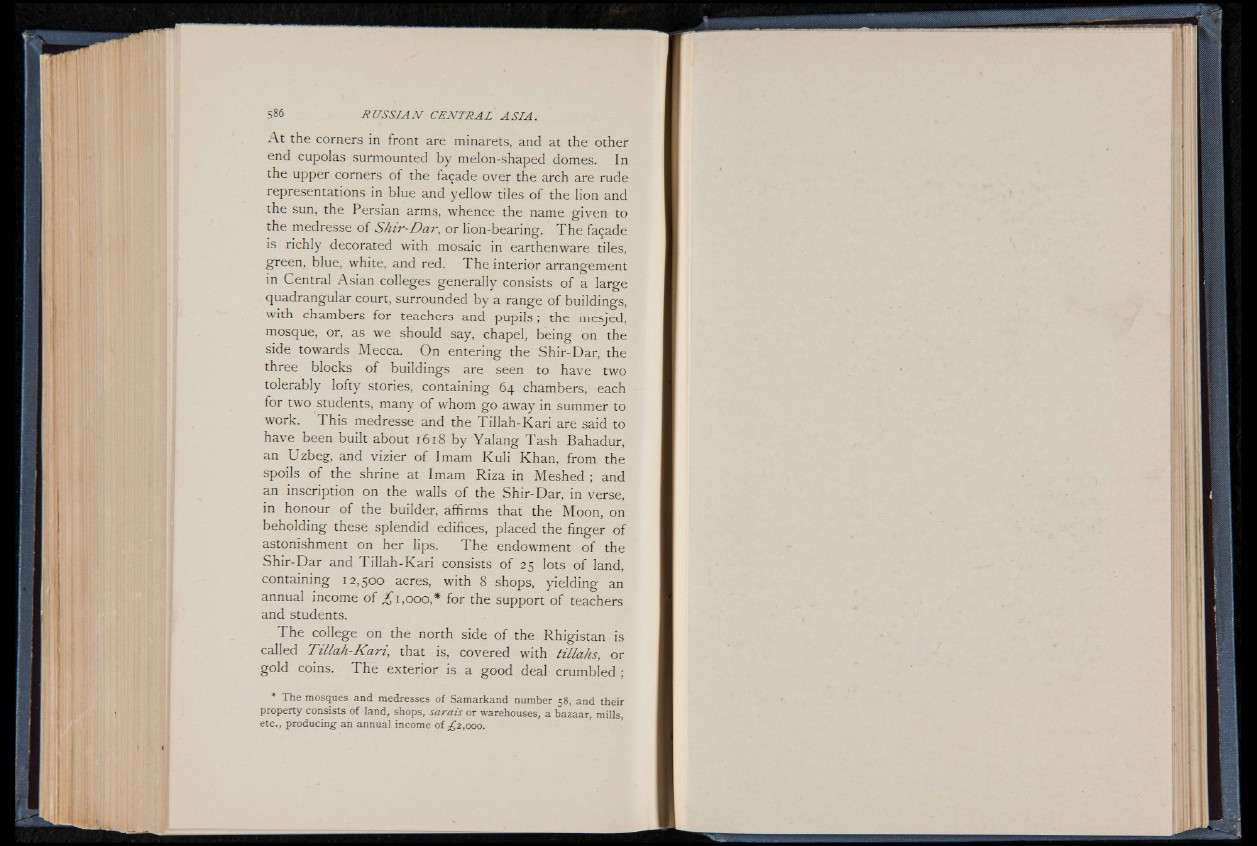
A t the corners in front are minarets, and at the other
end cupolas surmounted by melon-shaped domes. In
the upper corners of the façade over the arch are rude
representations in blue and yellow tiles of the lion and
the sun, the Persian arms, whence the name given to
the medresse of Shir-Dar, or lion-bearing. The façade
is richly decorated with mosaic in earthenware tiles,
green, blue, white, and red. The interior arrangement
in Central Asian colleges generally consists of a large
quadrangular court, surrounded by a range of buildings,
with chambers for teachers and pupils ; the mesjed,
mosque, or, as we should say, chapel, being on the
side towards Mecca. On entering the Shir-Dar, the
three blocks of buildings are seen to have two
tolerably lofty stories, containing 64 chambers, each
for two students, many of whom go away in summer to
work. This medresse and the Tillah-Kari are said to
have been built about 1618 by Yalang Tash Bahadur,
an Uzbeg, and vizier of Imam Kuli Khan, from the
spoils of the shrine at Imam Riza in Meshed ; and
an inscription on the walls of the Shir-Dar, in verse,
in honour of the builder, affirms that the Moon, on
beholding these splendid edifices, placed the finger of
astonishment on her lips. The endowment of the
Shir-Dar and Tillah-Kari consists of 25 lots of land,
containing 12,500 acres, with 8 shops, yielding an
annual income of £ 1,000,* for the support of teachers
and students.
The college on the north side of the Rhigistan is
called Tillah-Kart, that is, covered with tillahs, or
gold coins. The exterior is a good deal crumbled ;
* The mosques and medresses o f Samarkand number 58, and their
property consists o f land, shops, sarais or warehouses, a bazaar, mills,
etc., producing- an annual income of £ 2 ,0 0 0 .
m w